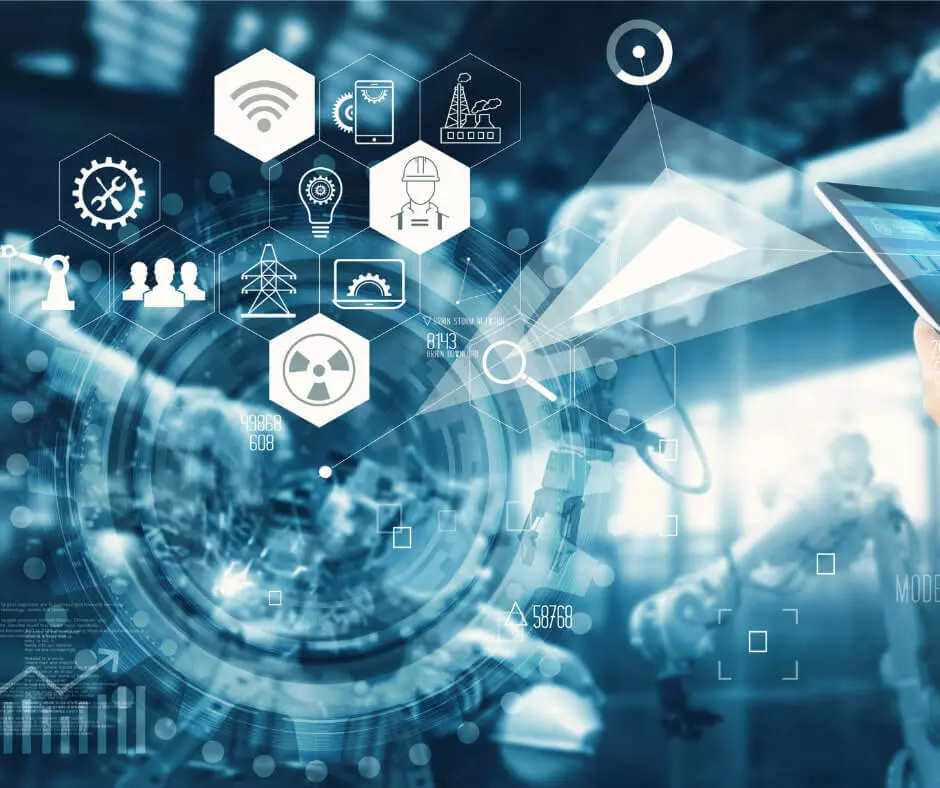
Trouble-shooting and industrial automation
How important is the time factor when it comes to solving a technical problem within a production line? It’s crucial. It has consequences on many other aspects. Management and economics are the first ones. A robotized cell is an industrial automation system which is specifically installed to speed up production times, improve workflows and run even when the company is closed. But what if it gets stuck, an alarm is set off or there is a problem? And what if it has to be put into production/ be turned on but it’s not possible to receive on-site assistance?
When you buy a machine you also acquire the right to get assistance and technical support from the experts who designed and built it. In order to meet the duty that is implicit in their role of suppliers, industrial automation companies must do their utmost. Especially if, - like Tera Automation - the robot cell - or the machinery - is developed and built on site.
Although a robotic cell is a technologically advanced system, difficulties are always possible and there are endless support options for them. After all, a robotic cell can handle a variety of tasks in a wide range of industrial applications. Each of them has specific assistance needs. So, let’s see what are the advantages of industrial automation when the analysis and management of problems from a remote location and in a short time is required.
REMOTE ASSISTANCE ON ROBOT CELLS AND AUTOMATIONS
A company dealing with industrial automation must be able to exploit all possible channels to make customer-supplier and supplier-machine communication fluid. Creating an information and monitoring network is therefore essential to give quick and certain answers. In fact, today more than ever before, assistance service is key for every manufacturing company.
Tera Automation’s robot cells are designed to work autonomously for long sessions. We consider it a natural consequence of this performance that customers are able to access and operate the machine just as independently. Those who work in contact with a robotic cell have to get to know it and carry out routine maintenance operations. This makes primary service videos very effective. They are essential for giving initial explanations on how to deal with the most frequent alarms.
In fact, it is always important to keep in mind that a robot cell offers unimaginable levels of performance for a human being. However, it is still a machine which is installed in a working environment and alarms can be triggered, even to protect those who work in that environment.
BENEFITS AND THE TIME FACTOR
The advantages of the remote control of any type of industrial automation are many:
- Preventive maintenance
- Remote access to machines from anywhere in the world for diagnostics, modifications, customizations and software upgrades.
- No need for additional software
- Risk reduction and cost optimization
- ERP-machine connection
- Acquisition and storage of production data for easier process management
- No danger of data breach
- Monitoring of any parameters required by the customer
- Resource optimization
- Resolution of critical issues in a short time
As mentioned above, time is money, and this is the mindset in which many companies choose to install one or more automated lines and robotic cells within their production line.
If production stops, it’s a real problem. The time between reporting the failure or malfunction and its resolution is a crucial factor. That’s why remote assistance is not an optional extra, but a benefit to make the most of.
Tera Automation’s robotic cells and automations are designed to be monitored remotely, and therefore to create a non-stop cycle of the machine without trouble-shooting having a negative impact on the company’s production.
DISTANT BUT CLOSE
Today - in March 2020 - we are in the middle of an international health emergency, but many industries are fortunately going on. But what to do to install and put into production a robotized cell or an automated line without the possibility of on-site assistance? This is the advantage of remote support and monitoring that every industrial automation should have.
Tera Automation, for example, has developed a complete remote assistance system that can be used for emergency maintenance, installation and start-up, as well as data monitoring. It consists of a router, a data acquisition and storage software and a vision system.
What happens in extreme circumstances, like when it is not possible to travel or when traveling would still require long waiting times? Remember the importance of the time factor? Then information and solutions must arrive remotely.
What can a well-planned network of remote machine analysis and monitoring do?
- Fast diagnostics of faults and troubleshooting
- Digital management of maintenance documents
- Simplified communication because the supplier 'sees' what the company is experiencing
- Analysis of organizational issues
